Based In Science, Elevated by Service
Based In Science, Elevated by Service By Vessel Crew Vessel’s passion for improving the lives of others is anchored in an enthusiasm for science and its basis in wellness. Since our founding,…

By Vessel Crew

“I have never played tennis, but I think I have tennis elbow. How do I know?” If your forearm muscles and tendons are painful where they connect to your elbow, you might have Tennis Elbow. Also referred to as lateral epicondylitis, tennis elbow is an overuse injury that affects people who use their forearms in repetitive motions during work or daily activities. The pain extends at or from the outside bony area of your elbow, the lateral epicondyle. The pain comes from inflammation or degeneration of the tendon. You can do several simple tennis elbow tests at home to determine if you have this painful condition.
The following are some preliminary tennis elbow tests that you can do at home. You should always follow up with your doctor to see if you need additional testing or there may be other causes for any of your symptoms. The doctor can also discuss your treatment options. Pain during any of these tests is an indication you may have tennis elbow.
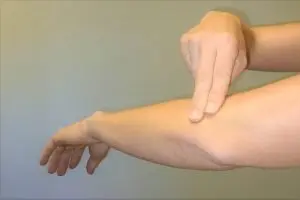
Palpitating is a self-test where you touch the affected area and note any pain, tenderness, or swelling. It is best to sit at a table or desk and extend your forearm out in front of you. Using your other hand, gently touch the bony upper knot outside your elbow, the lateral epicondyle. Slowly increase the pressure until there is pain or you determine there is no pain.
This tennis elbow test is a simple one. For the coffee cup test, you check for pain while grasping a cup of coffee or any other object. This grasping motion engages the forearm muscles and loads the tendon that attaches to your lateral epicondyle.
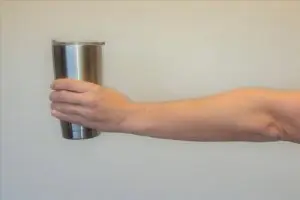
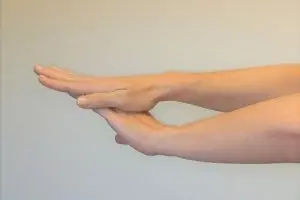
There are two types of resistance tests for tennis elbow. They focus on either stretching or extending the wrist and forearm muscles that may be affected. For the palm resistance test, stretch your affected arm straight out in front of you with your palm facing down. Your arm should be parallel to the floor. Next, place your other hand’s palm on the top of the extended hand. With the bottom hand (affected arm), try to bend your wrist backward while applying resistance with the palm of your top hand. This action engages the muscles that flex your wrist and attach near your elbow.
You can do this same test but only with your middle finger. Set your arms and hands up the same way, except your affected arm is palm-up this time. Instead of moving your wrist, use your opposite hand to pull your middle finger upward, toward your forearm. At the same time, try to resist the movement of your middle finger.
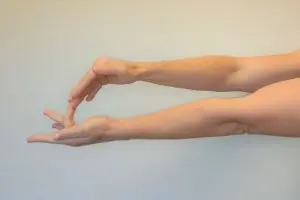
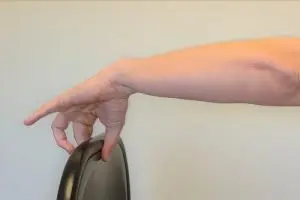
For this test, you will need a typical wood or metal chair. Make sure it is light and has a high back. You will try to pick up the chair with just your thumb, pointer finger, and middle finger. With your arm extended and palm down, grasp the back of the chair. With just the three digits, try to lift it off the ground.
Mill’s test is a test that your doctor will most likely do in the office. This test will have you straighten out your affected arm, so it is parallel to the floor. You will flex the wrist down with your elbow straight, bending your hand down towards your forearm. This movement engages your forearm muscles.
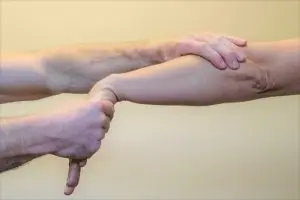
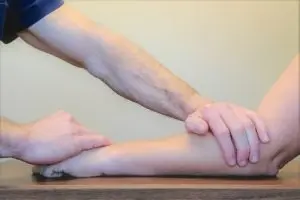
Cozen’s test is a second test that your doctor might perform to test for tennis elbow. It is like the Resistance Test. With your arm on a flat surface, like a table, you will make a fist with the hand on your affected arm. You will then rotate your arm inward and bend your wrist upward away from the surface. While you are moving your wrist upward, the doctor will put pressure on the tendon and provide some resistance to your wrist movement or possibly bend your wrist the opposite way lightly. The doctor may ask you to change directions in bending your wrist while he/she gives resistance.
If any of these simple tennis elbow tests cause pain, you most likely have tennis elbow. Your doctor may require further testing to rule out other things, such as arthritis or nerve problems. An X-ray would help identify arthritis. Electromyography (EMG) would help diagnose a nerve problem. Your doctor will most likely order a magnetic resonance imaging (MRI) scan that will ‘see’ the soft tissue of the tendons if you fail to respond to conservative treatments.
You have done your at-home tests, and your doctor confirms you have tennis elbow, so what are your treatment options? Luckily, there are several ways to manage and treat your tennis elbow pain at home.
The most important thing you can do to heal your tennis elbow is to stop doing the stressful or repetitive activity that caused the injury. Listen to your body and if it hurts, try to give it some rest. You can use a brace, apply ice, or take nonsteroidal anti-inflammatory drugs (NSAID), such as aspirin, ibuprofen, or naproxen to help manage the pain and inflammation. Steroid injections, such as cortisone, are popular because they help to temporarily reduce the pain and inflammation. But be careful, research shows that they also disrupt the healing process. There are also stretching and strengthening exercises you can do on your own but your doctor will most likely prescribe physical therapy.
If you have tried these conservative treatments and are still suffering from tennis elbow, your next option may be surgery or High-Energy Extracorporeal Shockwave Therapy (HeSWT). With surgery, your doctor will scrape away (debride) the scar tissue that is inhibiting the healing of your tendon. Your elbow will be immobilized for a period for the tendon to heal and physical therapy is often required.
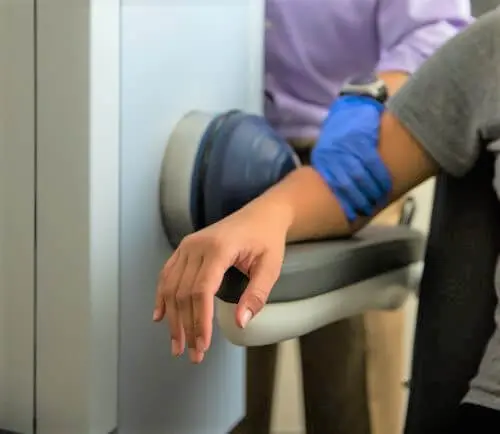
OrthoWave® is an FDA approved High-energy Extracorporeal Shockwave Therapy (HeSWT) treatment and a non-invasive alternative to surgery. The energy from the shockwaves breaks apart the scar tissue, causes new blood vessels to form, and stimulates your body’s healing response to heal the injury, for long term results. Only a single session of OrthoWave® is needed, and there is no downtime after your treatment, unlike surgery.
Tennis elbow is painful and can affect many aspects of your daily life and work. Hopefully, these tennis elbow tests will help you identify the cause of your pain. As always, visit your doctor for an official diagnosis. Tennis elbow may be common, but it is also preventable and treatable.
Based In Science, Elevated by Service By Vessel Crew Vessel’s passion for improving the lives of others is anchored in an enthusiasm for science and its basis in wellness. Since our founding,…
NADH, NAD+, And NAD Benefits, Side Effects, Dosage And Stacking By Vessel Crew Let’s learn a little about this co-enzyme called NAD. It can be referred to as NADH, NAD+, NAD, vitamin…
©2024 Vessel Longevity + IV Bar ATX